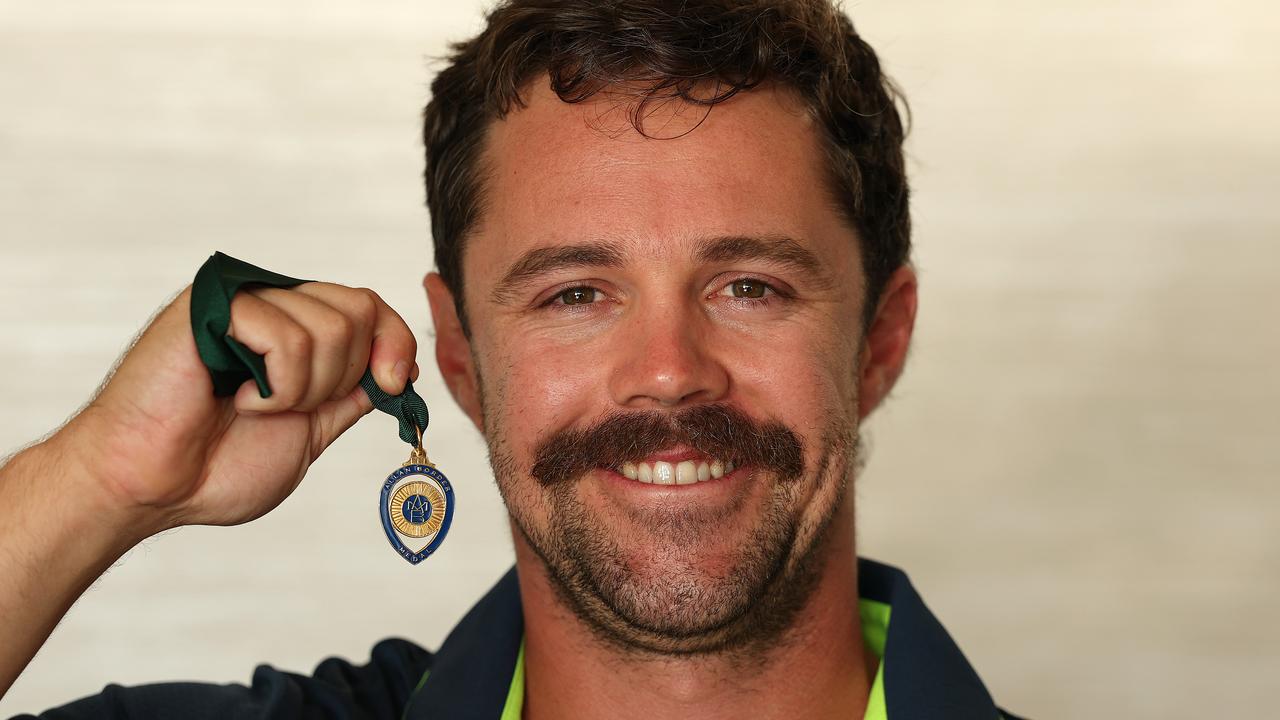Steve Waugh, Curtly Ambrose and the beginning and end of two eras of Test cricket dominance
When Australia toured the Caribbean 25 years ago this month, they faced a West Indies side unbeaten in 15 years and 30 series. What unfolded proved a diverging moment for two cricketing superpowers.
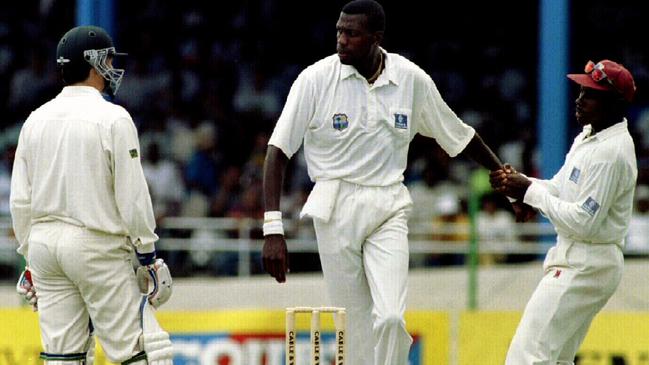
Cricket
Don't miss out on the headlines from Cricket. Followed categories will be added to My News.
- No fans, no play: legend’s big T20 World Cup call
- Kohli centre of attention, even if no one’s watching
As the Australian team coach skirted past the area of Sabina Park that housed the home change rooms, 25 years ago next month, there was no music.
No laughter. The usual rhythms of the place absent.
The previously all powerful West Indians were silently contemplating a first Test series loss in 15 years.
Watch Fox Cricket Classics on Kayo including the ‘97/98 Aus v RSA 2nd ODI & the 2015/16 Aus v India 3rd T20. New to Kayo? Get your free trial now & start streaming
In the Australia change rooms an hour earlier, by contrast, the party was in full swing. Beyond the playing group other guests arrived. Allan Border, out in the Caribbean on media duties, David Hookes and Greg Richie, men who had felt the full force of West Indian domination in their playing careers.
In years of trying, Border, famously, painfully could not get the job done against the pre-eminent side of the age. Though he had done much to help build a team that now could.
“That really sunk it in for me,” remembers all-rounder Brendon Julian, who took nine wickets at 26.22 across the series. “It wasn’t just a win for us, it was a win for all those players who had been there before and not been able to get over the top of them.”
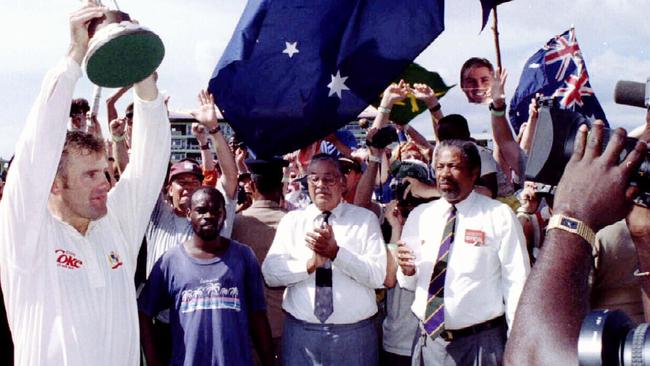
As much as being an end of things for the home side, it felt like a beginning, too, for the victors.
Australia had not beaten the West Indies since the 1975/76 series in Australia, when Greg Chappell led a team featuring legendary names such as Ian Chappell, Dennis Lillee, Rod Marsh and Jeff Thomson to a 5-1 series victory.
What followed was the tumultuous period of World Series Cricket before the Aussie team bottomed out, resulting in the tearful resignation of captain Kim Hughes in 1984 after yet another defeat against a rampant West Indies at the peak of their ruthless powers.
But something had changed in the decade leading up to this particular tour.
First the World Cup win under the captaincy of Border, before an era-defining success against England on the Ashes tour of 1989. Australia were on the rise.
“There was an air that we’d discovered something special in terms of the team,” says Julian. “We had (Ricky) Ponting and JL (Justin Langer) on the sideline. A group of players who were learning a lot about themselves, and the way to play the game, and how a real squad can pull you over the line.”
The galvanising of a collection of players who now could - and would - dominate themselves for the next decade and more.
MISSION IMPOSSIBLE?

Few neutral observers had given Australia a chance ahead of this tour, especially after they were robbed of their front line attack for the four Tests.
With Damien Fleming already sent home with a torn rotator cuff, a twisted ankle and badly torn ligaments suffered on a morning jog by the beach had cost them the services of, Craig McDermott, too.
Captain Mark Taylor, then, had to plot the downfall of the world’s no.1 team with a callow bowling attack of forced changes and promotions to support Shane Warne. A rising quick by the name of Glenn McGrath, Paul Reiffel and all-rounder Julian, an injury replacement for Fleming, had played just 23 Tests between them.
West Indies, it is true to say, were already in the early stages of a decline that, in Test cricket at least, has never been arrested since.
Opening batsman Desmond Haynes was not involved, absent due to a bitter legal dispute with the West Indies Cricket Board. Richie Richardson was returned to the team and captaincy after a year out dealing with mental fatigue and personal tragedy.
Viv Richards, Malcolm Marshall and Gordon Greenidge, veterans of brutal conflicts with Australia in series past were no longer playing.
But they were not short on talents.
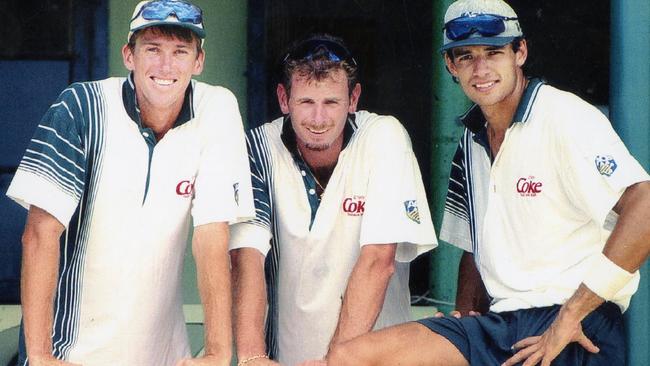
Courtney Walsh and Curtly Ambrose still led the attack. Fractionally past their absolute prime, perhaps, but still with an aura and competitiveness that made them a terrifying prospect to face.
And in the middle order, Trinidad and Tobago’s Brian Lara had already proved his ability to play innings of genuine greatness, not least in claiming the record for the highest ever individual test score of 375 just 12 months prior. Australia had seen what he was capable of first hand, with his sublime debut ton of 277 at the SCG on the West Indies’ previous visit to Australia.
CHANGE OF MINDSET
Despite the hosts’ vulnerabilities, they had comfortably won the preceding ODI series 4-1, in which Australia underperformed.
Taylor demanded improvement. And a change in mindset. One that was to prove decisive.
“Because we had a depleted bowling line up, going in to it we were always the underdogs, there’s no question about that,” says Julian.
“But our frame of mind was all about being aggressive. We were just going to take it to them, with nothing to lose.”
The revamped bowling unit did not carry the scars of the angst-ridden tour of 90-91. And took the instructions from senior players to heart.
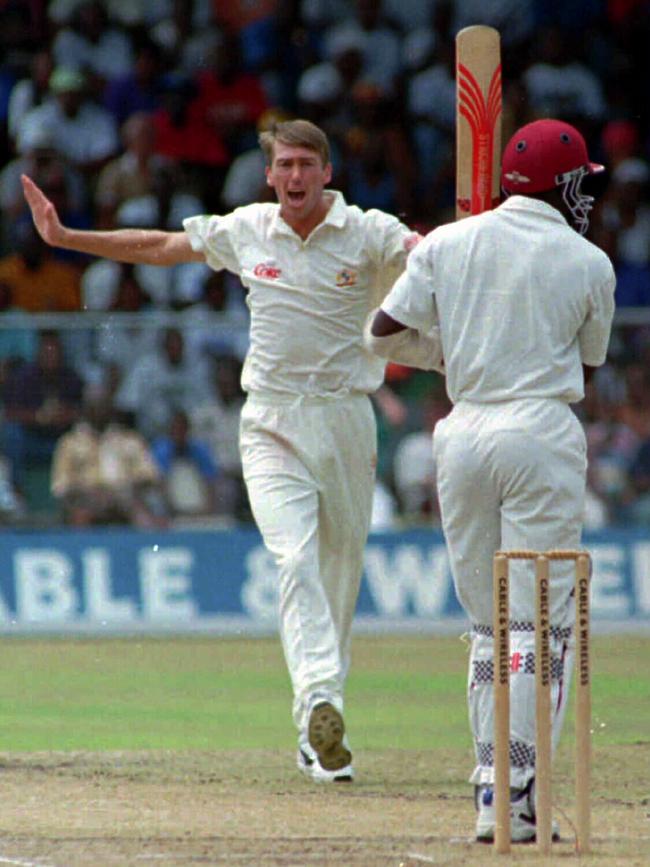
“They learned from mistakes of the previous tour. Particularly against the tail. They bowled bouncers and we didn’t really,” says Julian. “Mainly led by Steve and Mark Waugh, David Boon, Mark Taylor it was made clear that ‘we’re not going to do what we did on that tour, we’re going to stick it to them’.
“Playing the West Indies is hard, even harder touring there, it’s going to be brutal, but we’re just going to have to cop it and get on with it. We were going to bounce the tail, they were going to bounce us, we were going to get hit.
“As you kids we were just like: well, all right, that’s just what we’ve got to do.”
Steve Waugh later wrote that those of limited batting quality like McGrath facing West Indian fast bowlers of the era was like ‘a featherweight taking on Muhammad Ali’ with bat in hand.
Peppering Ambrose and Walsh with bouncers, he not unreasonably concluded, would surely lead to ‘pain as a logical outcome’.
McGrath, elevated from 12th man or first change bowler to spearhead by others’ misfortune, however, was unafraid. Having gone for the jugular in a practice match he signalled he was prepared to do so in the real theatre, too.
Australia would, as Ian Healy said at the time, “get their retaliation in first”.
FIRST BLOOD
On the first morning in Bridgetown, Barbados, Reiffel and Julian made light of McDermott and Fleming’s absence, combining to remove the top order in the first half hour of the opening match, before McGrath took eight wickets across a low scoring contest, with Walsh and Ambrose largely subdued.
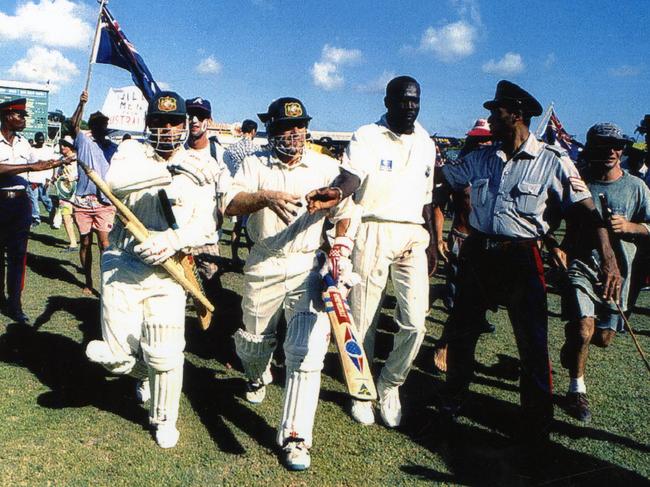
Veterans Taylor, Steve Waugh and Healy all showed they were up for the fight with first innings half centuries.
Momentum had been seized at the earliest opportunity. A 10-wicket victory had confidence high in the Australian camp.
A 2-0 lead was in sight after Lara and Richardson had been removed with West Indies chasing 257 in the fourth innings of the second Test in Antigua, before rain washed away the final day.
Though the draw kept the series alive, there was further evidence of chinks in the West Indies previously impenetrable armoury.
After scores of nought and 36 in the opening Test defeat, Richardson had moved up to open in Antigua. His batting position wasn’t the only thing to have changed.
His maroon floppy sun hat, an iconic piece of kit that made him instantly identifiable across the globe was gone. In its place he wore a helmet for the first time in his career.
It is tempting to draw grand conclusions from small acts in sport. But as a symbol of the West Indians’ discomfort, the first, feather cracks to the bravado and swagger, it could not be easily dismissed.
WEST INDIES FIGHT BACK: ALMOST LITERALLY
With Australia on top in the series, the hosts needed a reaction. And one duly came in Port-of-Spain, Trinidad, venue of the third Test. With a decent amount of assistance from home comforts.
When the covers came off following a long period of rain at Queens Park Oval, a green, heavily grassed deck was revealed of the kind that Ambrose and Walsh’s dreams were made.
Though one without markings on. The grass appearing uncut.
The Australia team reasoned that play was going to be delayed. As the tourists walked away from their inspection, ground staff, however, started to busily prepare the pitch.
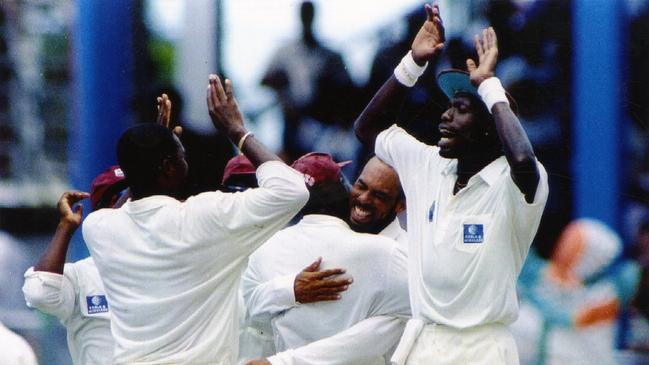
“So within half an hour Tubby was out there, had lost the toss and we’d been sent in,” remembers Julian.
Australia were duly skittled for 128 and 105, a nine wicket win levelled the series.
Even in heavy defeat, however, perhaps the greatest psychological blow had been landed by an Australian. With the tourists bombarded by heavy artillery and Ambrose and Walsh breathing fire, Steve Waugh’s first innings 63 can rightly be considered one of his finest ever knocks, regardless of the match result.
Against two of the finest pace bowlers to play the game, and the ball doing plenty, Waugh’s resolve and willingness to join the fight, and stay there, took on its most visceral form.
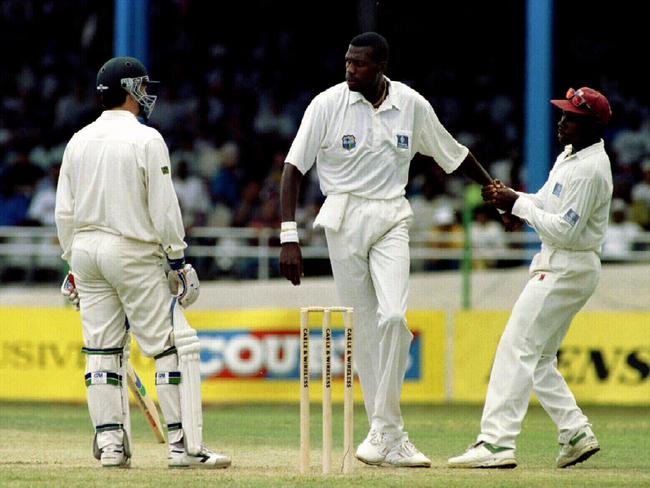
At one point a verbal confrontation with Ambrose was only prevented from becoming physical by Richardson, eventually, literally dragging the wild-eyed Ambrose away.
It is a moment that defined the match and series. Though given an almost comic edge as the diminutive Richardson struggles to move his giant 2.01m teammate from the theatre of conflict.
The watching and re-watching over the years has built up the legend still further, but even at the time the message was clear. Waugh’s impassive, dead-eyed refusal to take a backward step was absolute. Intimidation only works if the subject allows himself to be intimidated.
“It was typical Steve Waugh. He didn’t really say much. ‘Get back and bowl’. There wasn’t a lot of mouthing off and all that. Because Steve wasn’t like that anyway,” says Julian.
“It was just a pressure point where you thought something like that was always going to happen.
“We just put that Test result down to the luck of the draw and the toss of a coin. We got sent in on a bouncy, juicy pitch, and got rolled. We just went, you know what, we were unlucky there.
“We just moved on. It was 1-1 and we’re off to Jamaica. Let’s not worry about it.”
BROTHERS IN ARMS
At the deciding fourth Test Waugh was again to play the decisive hand. This time in concert with a familiar wing man.
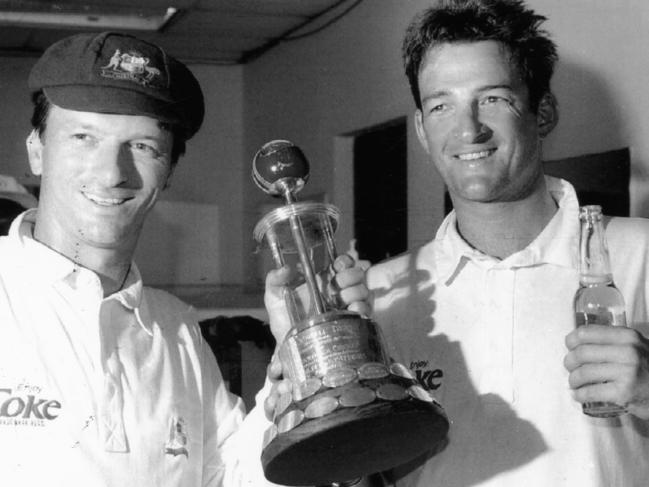
In stark contrast to Trinidad, Jamaica’s Sabina Park served up a hard clay surface so shinny you could almost see your face in it. West Indies won the toss, again, and at 1-100 at lunch with Richardson working towards his sole ton of the series, and Lara seemingly as set as concrete, could be forgiven for assuming the match, and series, was within their grasp.
But then the fightback began. Launched when Warne dismissed Lara for the first time in eight Tests just before lunch. The hosts’ middle order failed to be all out for 265, after losing their final seven wickets for 77.
“Bowling them out for that total on a flat pitch in Jamaica, after they’d won’t he toss and batted first, that was a big step forward to us thinking: you know what, we can win this Test match,” says Julian.
“There was 450 in that pitch, every day of the week.”
The Waugh twins came together after Australia started their own innings three down for just 73. The 33 Tests in which they had played prior to this match had yielded a single century partnership. Here they were to combine for 231 in a matchwinning combination of guts and grace.
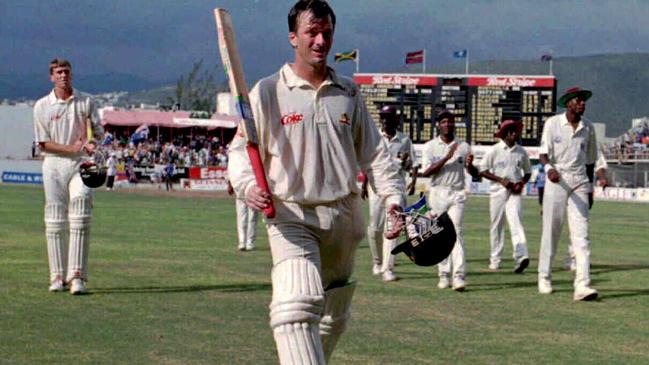
Steve Waugh’s reluctance to hook invited bouncers, and he wore plenty of them, his body a patchwork of bruises.
The brothers, however, were not just surviving but counter punching, ticking the scoreboard over and wearing out the West Indian bowlers - seven of which were used against them - in the process.
“Bowl short he’d get hit on the gloves and he’d ride it out, pitch it up and he’d hit it for four,” says Julian of the senior Waugh’s innings.
“Once they couldn’t get through that partnership and we’d taken a lead in the innings, the mood suddenly changed. Other players didn’t perform, Richie Richardson was feeling he heat, they’d copped a lot of pressure form the media locally.”
Winston Benjamin was famously reduced to tears on the field when local fans voiced their displeasure at his efforts.
Both Waughs secured their eighth Test century that innings. Steve Waugh was the last man out, dismissed by Benjamin for exactly 200, with Australia all out for 531, a lead of 266.
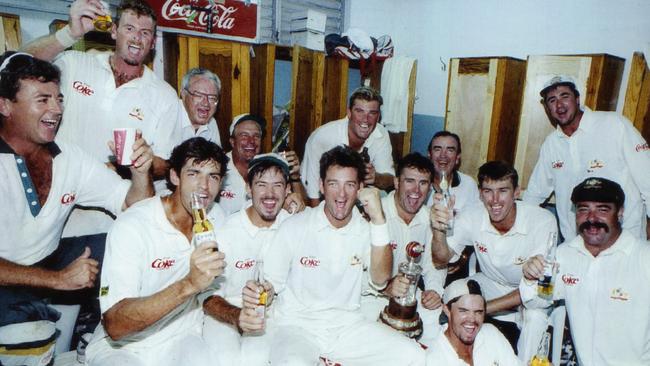
Wisden reported of the epic contest that it was a case of “strike or be struck down.”
A cricket match “more like arm wrestling, white knuckles tilted back and forth until the strain told, the weaker man snapped.”
Steve Waugh, along with his brother, had simply refused to be the one to yield. The same could not be said of West Indies, succumbing to an innings and 53 runs defeat as Warne cleaned up the tail.
Originally published as Steve Waugh, Curtly Ambrose and the beginning and end of two eras of Test cricket dominance

